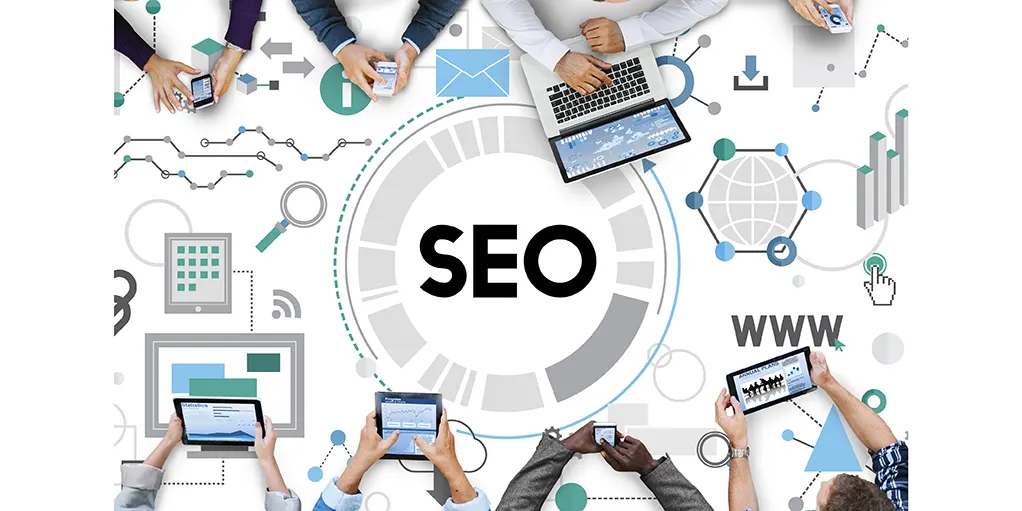Introduction
In the digital era, having a well-designed website is crucial for any business aiming to succeed online. However, even the most aesthetically pleasing website can fail to attract and retain visitors if it is not optimized for search engines. Search Engine Optimization (SEO) is a fundamental aspect of web design that significantly influences a website’s visibility, user experience, and overall business success. This blog will explore the importance of integrating SEO into web design and how it can drive business growth.
What is SEO in Web Design?
SEO in web design involves incorporating various techniques and practices while developing a website to ensure it is easily discoverable and rankable by search engines like Google, Bing, and Yahoo. This includes optimizing site structure, URLs, meta tags, content, images, and loading speed to enhance the search engine performance.
The Critical Role of SEO in Web Design
- Enhanced Visibility and Traffic: A primary goal of SEO is to improve a website’s ranking on search engine results pages (SERPs). Higher rankings lead to increased visibility, which drives more organic traffic to your site. When potential customers search for products or services related to your business, appearing on the first page of search results significantly increases the chances of attracting clicks and visits.
- Improved User Experience: SEO and user experience work together. A well-optimized website is easy for search engines to crawl and user-friendly. Elements like fast loading times, mobile responsiveness, intuitive navigation, and high-quality content contribute to a positive user experience. Satisfied visitors are more likely to stay longer, explore more pages, and ultimately convert into customers.
- Higher Conversion Rates: An SEO-friendly web design makes it easy for users to find what they want. By optimizing for relevant keywords, creating compelling meta descriptions, and ensuring a seamless user journey, you can attract targeted traffic that is more likely to convert. Effective SEO strategies align with the needs and intent of your audience, increasing the likelihood of higher conversion rates.
- Competitive Advantage: In a congested online business, getting ahead of the competition is necessary. Businesses that invest in SEO during the web design phase are more likely to outrank competitors who neglect this aspect. A well-optimized website attracts more visitors and establishes your brand as an authority in your industry, fostering trust and credibility.
- Cost-Effective Marketing: Compared to other digital marketing strategies like paid advertising, SEO offers a cost-effective solution with long-term benefits. While it requires an initial investment in time and resources, the ongoing costs are relatively low. Once your site achieves higher rankings, it continues to attract organic traffic without the need for continuous ad spending, providing a high return on investment (ROI).
Key SEO Elements to Incorporate in Web Design
- Mobile Optimization: With significant internet traffic from mobile devices, ensuring your website is mobile-friendly is paramount. Responsive design adapts to different screen sizes, providing a seamless experience for mobile users and improving your site’s search engine rankings.
- Fast Loading Speeds: Page speed is crucial for both user experience and SEO. Slow-loading websites can annoy users and result in high bounce rates. Optimize images, leverage browser caching, and use content delivery networks (CDNs) to enhance loading speeds and improve search engine rankings.
- Clean URL Structure: A clear and logical URL structure helps search engines understand the hierarchy and relevance of your content. Use descriptive, keyword-rich URLs that are easy for users and search engines to read. Avoid using complex strings of numbers and symbols.
- Quality Content: Content is a cornerstone of SEO. High-quality, relevant content that addresses your audience’s needs and queries can improve your search engine rankings and engage visitors. Incorporate keywords naturally, use engaging headlines, and ensure your content is informative and valuable.
- Meta Tags and Descriptions: Meta tags, such as title tags and meta descriptions, supply search engines with information about your web pages. Craft compelling and keyword-optimized meta tags that accurately describe each page’s content. This helps with rankings and encourages users to click on your links in SERPs.
- Internal Linking: Internal links connect different pages on your website, helping users navigate and discover related content. They also help search engines understand the structure of your site and the importance of various pages. Use descriptive anchor text and ensure links are relevant to the content.
- Secure Website (HTTPS): Security is a ranking factor for search engines. Ensure your website uses HTTPS to protect user data and build trust. An SSL certificate secures your site and signals to search engines that your website is safe.
Conclusion
Integrating SEO into web design is a technical necessity and a strategic move that can significantly impact your business success. By enhancing visibility, improving user experience, and driving targeted traffic, SEO helps you build a strong online presence and stay competitive. Investing in SEO from the outset ensures your website is optimized for search engines and poised for growth, ultimately leading to higher conversion rates and a better ROI. Embrace the power of SEO in web design to unlock the full potential of your digital marketing efforts.
To know more about Social Media Marketing, Please visit https://paypercampaign.com





